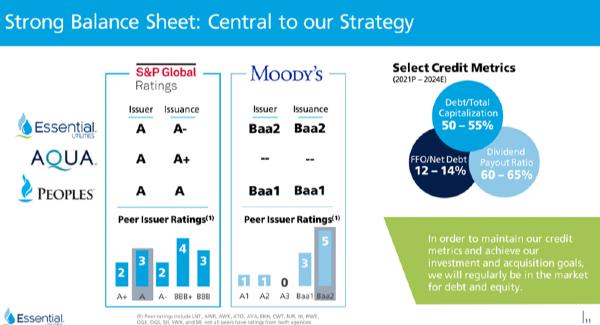I’m at a party and someone asks me about The Best Interest. I give my usual answer above loving to write about personal finance and investing, and a third chatter says,
No offense, but isn’t personal finance pretty simple!? Make a budget. Spend less than you earn. Invest, but keep fees low. Once you know the, like, eight basic rules or whatever it is, then you’re done.
I don’t get how there can be so many blogs and books and podcasts. They’re all just re-hashing the same thing!
Yes, personal finance is simple. In fact, I don’t even think there are eight rules. Just three:
- A) Spend less than you earn.
- B) …then save/invest the difference.
- C) Create safety nets (emergency fund, wise insurance policies)
That’s it. Three rules. That’s personal finance in its simplest form. Even simple books like The Index Card, which is premised on 9 rules that fit on an index card, play off my three rules. The 9 rules of The Index Card are:
- Max your 401(k) or equivalent employee contribution. (my Rule B)
- Buy inexpensive, well-diversified mutual funds such as Vanguard Target 20xx funds. (Rule B)
- Never buy or sell an individual security. The person on the other side of the table knows more than you do about this stuff. (Rule B)
- Save 20% of your money. (Rule A)
- Pay your credit card balance in full every month. (Rule A)
- Maximize tax-advantaged savings vehicles like Roth, SEP and 529 accounts. (Rule B)
- Pay attention to fees. Avoid actively managed funds. (Rule B)
- Make financial advisors commit to the fiduciary standard. (Rule A & B)
- Promote social insurance programs to help people when things go wrong. (Rule C)
If every piece of personal finance advice fits nicely into one of my three rules above, why is there all this content?
The 80/20 Principle
Even if three rules alone can complete 80% of someone’s personal finance repertoire, we need more details to fill in the remaining 20%.
The Devil’s in the Details
How can I spend less? How can I earn more? How should I invest? What’s ‘wise insurance’? etc, etc.
The real pudding of personal finance needs more explanation than three simple rules. Good personal finance content dives deep into those details.
Peeling Back the Onion
Shrek famously quipped,
Ogres are like onions. We’ve got layers.
Shrek
Personal finance is no different. Every “rule” has layers. It’s subdivided. It has exceptions, needs explanations, etc.
Differences at the Margins
Assuming we agree on the basics of personal finance, there’s still plenty of room for disagreement at the margins. Lots of personal finance content lives here.
- Should you aim to save 10% of your income? 20%?
- What’s a “low” interest rate?
- How detailed should your budget be?
There’s plenty of narcissism of small differences.
Behavioral Shortcomings
Even if you can boil down personal finance to three, nine, or 20 rules, people still discipline and consistency to follow those rules. More and more personal finance content focuses on “behavioral finance,” pointing out the all-too-human shortcomings that prevent us from reaching out financial goals.
Different Voices
There’s a reason Morgan Housel is famous and I’m not. He’s a better writer than me!
Different voices bring new life to old rules, which helps people learn.
Reinforcement
One of my personal finance friends just passed 100,000 followers on Twitter.
He focuses his Tweets on 5 different statements. That’s it! Every Tweet he sends is a variation on one of those 5 statements.
While this kind of content can get stale, it also serves to reinforce his followers beliefs. And we know that confirmation bias is a powerful stimulant. While it’s not my preferred cup of tea, I understand the content strategy! And clearly, the audience appreciates it.
So yes – personal finance IS simple. But there’s a reason books, blogs, and podcasts are thriving. There’s a reason a few thousand of you are reading this.
Like Morgan Housel, I write about things that I find interesting and trust that some of you will find it interesting too. As long as that’s the case, I’ll keep coming back.
Thank you for reading! If you enjoyed this article, Subscribe to get future articles emailed to your inbox.
-Jesse
Want to learn more about The Best Interest’s back story? Read here
If you prefer to listen, check out The Best Interest Podcast, or listen to me on a bunch of other people’s podcasts.




























I’m at a party and someone asks me about The Best Interest. I give my usual answer above loving to write about personal finance and investing, and a third chatter says,
Yes, personal finance is simple. In fact, I don’t even think there are eight rules. Just three:
That’s it. Three rules. That’s personal finance in its simplest form. Even simple books like The Index Card, which is premised on 9 rules that fit on an index card, play off my three rules. The 9 rules of The Index Card are:
If every piece of personal finance advice fits nicely into one of my three rules above, why is there all this content?
The 80/20 Principle
Even if three rules alone can complete 80% of someone’s personal finance repertoire, we need more details to fill in the remaining 20%.
The Devil’s in the Details
How can I spend less? How can I earn more? How should I invest? What’s ‘wise insurance’? etc, etc.
The real pudding of personal finance needs more explanation than three simple rules. Good personal finance content dives deep into those details.
Peeling Back the Onion
Shrek famously quipped,
Personal finance is no different. Every “rule” has layers. It’s subdivided. It has exceptions, needs explanations, etc.
Differences at the Margins
Assuming we agree on the basics of personal finance, there’s still plenty of room for disagreement at the margins. Lots of personal finance content lives here.
There’s plenty of narcissism of small differences.
Behavioral Shortcomings
Even if you can boil down personal finance to three, nine, or 20 rules, people still discipline and consistency to follow those rules. More and more personal finance content focuses on “behavioral finance,” pointing out the all-too-human shortcomings that prevent us from reaching out financial goals.
Different Voices
There’s a reason Morgan Housel is famous and I’m not. He’s a better writer than me!
Different voices bring new life to old rules, which helps people learn.
Reinforcement
One of my personal finance friends just passed 100,000 followers on Twitter.
He focuses his Tweets on 5 different statements. That’s it! Every Tweet he sends is a variation on one of those 5 statements.
While this kind of content can get stale, it also serves to reinforce his followers beliefs. And we know that confirmation bias is a powerful stimulant. While it’s not my preferred cup of tea, I understand the content strategy! And clearly, the audience appreciates it.
So yes – personal finance IS simple. But there’s a reason books, blogs, and podcasts are thriving. There’s a reason a few thousand of you are reading this.
Like Morgan Housel, I write about things that I find interesting and trust that some of you will find it interesting too. As long as that’s the case, I’ll keep coming back.
Thank you for reading! If you enjoyed this article, Subscribe to get future articles emailed to your inbox.
-Jesse
Want to learn more about The Best Interest’s back story? Read here
If you prefer to listen, check out The Best Interest Podcast, or listen to me on a bunch of other people’s podcasts.
Originally Posted in The Best Interest